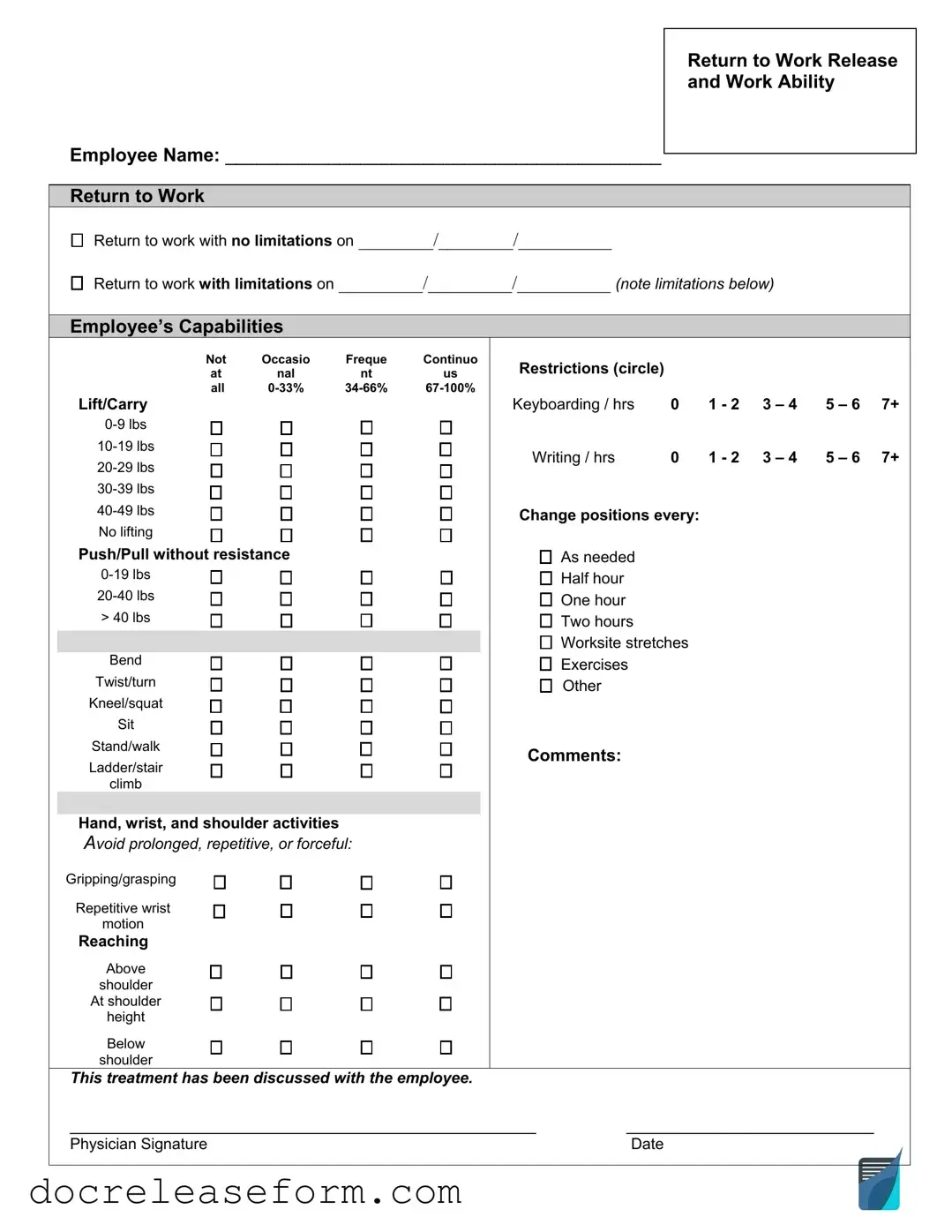Filling out the Work Release form is an important step for individuals seeking to balance work commitments with legal obligations. However, many people inadvertently make mistakes that can lead to delays or complications. Understanding these common pitfalls can help ensure a smoother process.
One frequent error is incomplete information. When applicants fail to provide all necessary details, such as their employer’s contact information or specific work hours, it can lead to processing delays. Always double-check that every section of the form is filled out accurately and completely.
Another mistake is providing incorrect dates. Whether it’s the start date of employment or the requested work release dates, inaccuracies can cause significant issues. Ensure that the dates align with your schedule and any legal requirements.
Some individuals neglect to sign the form. A signature is often required to validate the request. Without it, the form may be considered invalid, resulting in a denial of the request. Make it a point to sign and date the form before submission.
Additionally, failing to attach supporting documents can be a critical oversight. Many jurisdictions require proof of employment or other documentation to process the Work Release request. Gather all necessary papers and attach them to your application to avoid unnecessary delays.
Another common issue is misunderstanding the requirements of the form. Each jurisdiction may have different rules regarding work release eligibility. Take the time to thoroughly read the instructions and ensure compliance with all local regulations.
Some applicants also make the mistake of submitting the form late. Timeliness is crucial when it comes to work release requests. Submit your application well in advance of your intended start date to allow for any processing time.
Inaccurate job descriptions can also lead to complications. When filling out the form, be precise about your job responsibilities and the nature of your work. This information is essential for the authorities to understand the context of your request.
Moreover, neglecting to follow up after submission can be detrimental. It’s important to check the status of your application. If you haven’t received confirmation within a reasonable time, reach out to ensure that your request is being processed.
Lastly, some individuals fail to keep copies of their submissions. Always retain a copy of the completed Work Release form and any accompanying documents. This can be invaluable if any issues arise or if you need to reference your submission in the future.
By being aware of these common mistakes, individuals can navigate the Work Release form process more effectively. Taking the time to review your application can save you from potential setbacks and help you achieve your work goals while fulfilling your legal obligations.
